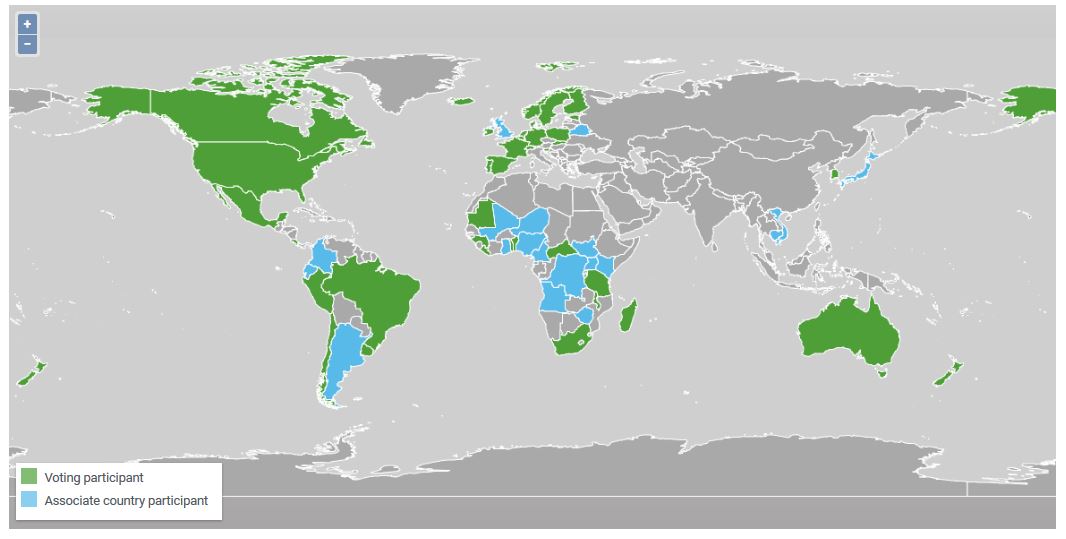|
Crematogaster Torosa
''Crematogaster torosa'' is a species of ant in the family (taxonomy), family Formicidae. Subspecies These four subspecies belong to the species ''Crematogaster torosa'': * ''Crematogaster torosa chodati'' Forel, 1921 * ''Crematogaster torosa goeldii'' Forel, 1903 * ''Crematogaster torosa stigmatica'' Forel, 1911 * ''Crematogaster torosa torosa'' Mayr, 1870 i c g Data sources: i = ITIS, c = Catalogue of Life, g = GBIF, b = Bugguide.net References Further reading * External links * Crematogaster, torosa Articles created by Qbugbot Insects described in 1870 {{Crematogaster-stub ... [...More Info...] [...Related Items...] OR: [Wikipedia] [Google] [Baidu] |
Gustav Mayr
Gustav L. Mayr (12 October 1830 – 14 July 1908) was an Austrian Entomology, entomologist and professor in Budapest and Vienna. He specialised in Hymenoptera, being particularly known for his studies of ants.1908. Obituary. Prof. Gustav Mayr. Entomological News 19:396 Bibliography In 1868, he was the first to describe the Argentine ant. He is credited with naming the harvesting ant species, ''Aphaenogaster treatae'', for naturalist Mary Treat, Mary Davis Treat, in honor of her research on the species. edite ... [...More Info...] [...Related Items...] OR: [Wikipedia] [Google] [Baidu] |
Species
A species () is often defined as the largest group of organisms in which any two individuals of the appropriate sexes or mating types can produce fertile offspring, typically by sexual reproduction. It is the basic unit of Taxonomy (biology), classification and a taxonomic rank of an organism, as well as a unit of biodiversity. Other ways of defining species include their karyotype, DNA sequence, morphology (biology), morphology, behaviour, or ecological niche. In addition, palaeontologists use the concept of the chronospecies since fossil reproduction cannot be examined. The most recent rigorous estimate for the total number of species of eukaryotes is between 8 and 8.7 million. About 14% of these had been described by 2011. All species (except viruses) are given a binomial nomenclature, two-part name, a "binomen". The first part of a binomen is the name of a genus to which the species belongs. The second part is called the specific name (zoology), specific name or the specific ... [...More Info...] [...Related Items...] OR: [Wikipedia] [Google] [Baidu] |
Family (taxonomy)
Family (, : ) is one of the eight major hierarchical taxonomic ranks in Linnaean taxonomy. It is classified between order and genus. A family may be divided into subfamilies, which are intermediate ranks between the ranks of family and genus. The official family names are Latin in origin; however, popular names are often used: for example, walnut trees and hickory trees belong to the family Juglandaceae, but that family is commonly referred to as the "walnut family". The delineation of what constitutes a family—or whether a described family should be acknowledged—is established and decided upon by active taxonomists. There are not strict regulations for outlining or acknowledging a family, yet in the realm of plants, these classifications often rely on both the vegetative and reproductive characteristics of plant species. Taxonomists frequently hold varying perspectives on these descriptions, leading to a lack of widespread consensus within the scientific community fo ... [...More Info...] [...Related Items...] OR: [Wikipedia] [Google] [Baidu] |
Crematogaster Torosa Casent0102828 Head 1
''Crematogaster'' is an ecologically diverse genus of ants found worldwide, which are characterised by a distinctive heart-shaped gaster (abdomen), which gives them one of their common names, the Saint Valentine ant. Members of this genus are also known as cocktail ants because of their habit of raising their abdomens when alarmed. Most species are arboreal (tree-dwelling). These ants are also known as acrobat ants. Cocktail ants acquire food largely through predation on other insects, such as wasps.Schatz, Bertrand, and Martine Hossaert-Mckey. "Interactions of the Ant Crematogaster Scutellaris with the Fig/fig Wasp Mutualism." Ecological Entomology 28.3 (2003): 359-68. Print. They use venom to stun their prey and a complex trail-laying process to lead comrades to food sources. Like most ants, ''Crematogaster'' species reproduce by partaking in nuptial flights, where the queen acquires the sperm used to fertilize every egg throughout her life. Predatory behavior Cocktail ants h ... [...More Info...] [...Related Items...] OR: [Wikipedia] [Google] [Baidu] |
Subspecies
In Taxonomy (biology), biological classification, subspecies (: subspecies) is a rank below species, used for populations that live in different areas and vary in size, shape, or other physical characteristics (Morphology (biology), morphology), but that can successfully interbreed. Not all species have subspecies, but for those that do there must be at least two. Subspecies is abbreviated as subsp. or ssp. and the singular and plural forms are the same ("the subspecies is" or "the subspecies are"). In zoology, under the International Code of Zoological Nomenclature, the subspecies is the only taxonomic rank below that of species that can receive a name. In botany and mycology, under the International Code of Nomenclature for algae, fungi, and plants, other infraspecific name, infraspecific ranks, such as variety (botany), variety, may be named. In bacteriology and virology, under standard International Code of Nomenclature of Prokaryotes, bacterial nomenclature and virus clas ... [...More Info...] [...Related Items...] OR: [Wikipedia] [Google] [Baidu] |
Integrated Taxonomic Information System
The Integrated Taxonomic Information System (ITIS) is an American partnership of federal agencies designed to provide consistent and reliable information on the taxonomy of biological species. ITIS was originally formed in 1996 as an interagency group within the US federal government, involving several US federal agencies, and has now become an international body, with Canadian and Mexican government agencies participating. The database draws from a large community of taxonomic experts. Primary content staff are housed at the Smithsonian National Museum of Natural History and IT services are provided by a US Geological Survey facility in Denver. The primary focus of ITIS is North American species, but many biological groups exist worldwide and ITIS collaborates with other agencies to increase its global coverage. Reference database ITIS provides an automated reference database of scientific and common names for species. it contains over 839,000 scientific names, synonyms, and ... [...More Info...] [...Related Items...] OR: [Wikipedia] [Google] [Baidu] |
Catalogue Of Life
The Catalogue of Life (CoL) is an online database that provides an index of known species of animals, plants, fungi, and microorganisms. It was created in 2001 as a partnership between the global Species 2000 and the American Integrated Taxonomic Information System. The Catalogue is used by research scientists, citizen scientists, educators, and policy makers. The Catalogue is also used by the Biodiversity Heritage Library, the Barcode of Life Data System, '' Encyclopedia of Life'', and the Global Biodiversity Information Facility. The Catalogue currently compiles data from 165 peer-reviewed taxonomic databases that are maintained by specialist institutions around the world. the COL Checklist lists 2,067,951 of the world's 2.2m extant species known to taxonomists on the planet at present time. Structure The Catalogue of Life employs a simple data structure to provide information on synonymy, grouping within a taxonomic hierarchy, common names, distribution and ecological e ... [...More Info...] [...Related Items...] OR: [Wikipedia] [Google] [Baidu] |
Global Biodiversity Information Facility
The Global Biodiversity Information Facility (GBIF) is an international organisation that focuses on making scientific data on biodiversity available via the Internet using web services. The data are provided by many institutions from around the world; GBIF's information architecture makes these data accessible and searchable through a single portal. Data available through the GBIF portal are primarily distribution data on plants, animals, fungi, and microbes for the world, and scientific names data. The mission of the GBIF is to facilitate free and open access to biodiversity data worldwide to underpin sustainable development. Priorities, with an emphasis on promoting participation and working through partners, include mobilising biodiversity data, developing protocols and standards to ensure scientific integrity and interoperability, building an informatics architecture to allow the interlinking of diverse data types from disparate sources, promoting capacity building and cat ... [...More Info...] [...Related Items...] OR: [Wikipedia] [Google] [Baidu] |
BugGuide
BugGuide (or BugGuide.net) is a website and online community of naturalists, both amateur and professional, who share observations of arthropods such as insects, spiders, and other related creatures. The website consists of informational guide pages and many thousands of photographs of arthropods from the United States and Canada which are used for identification and research. The non-commercial site is hosted by the Iowa State University Iowa State University of Science and Technology (Iowa State University, Iowa State, or ISU) is a Public university, public land-grant university, land-grant research university in Ames, Iowa, United States. Founded in 1858 as the Iowa Agricult ... Department of Entomology. BugGuide was conceived by photographer Troy Bartlett in 2003 and since 2006 has been maintained by John VanDyk, an adjunct assistant professor of entomology and a senior systems analyst at Iowa State University. [...More Info...] [...Related Items...] OR: [Wikipedia] [Google] [Baidu] |
California Academy Of Sciences
The California Academy of Sciences is a research institute and natural history museum in San Francisco, San Francisco, California, that is among the largest List of natural history museums, museums of natural history in the world, housing over 46 million specimens. The academy began in 1853 as a learned society and still carries out a large amount of original research. The institution is located in Golden Gate Park on the West Side (San Francisco), West Side of San Francisco. Completely rebuilt in 2008, the academy's primary building in Golden Gate Park covers . In early 2020, before the COVID-19 pandemic, the California Academy of Sciences had around 500 employees and an annual revenue of about $33 million. Governance The California Academy of Sciences, California's oldest operating museum and research institution for the natural sciences, is governed by a 41-member board of trustees who are nominated and chosen by the California Academy of Sciences Fellows. The Academy Fello ... [...More Info...] [...Related Items...] OR: [Wikipedia] [Google] [Baidu] |






